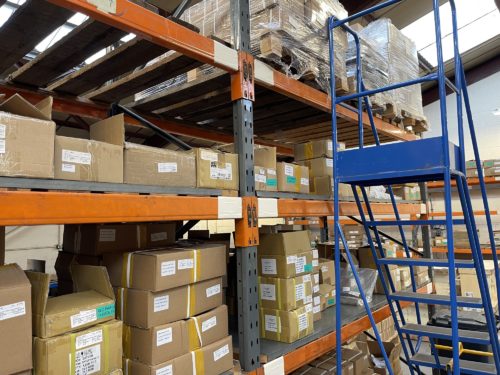Successful demand forecasting, where our customers provide information of their planned usage; gives healthier inventory management levels; increases productivity and most importantly to you as a customer, increases product availability so you can have your stock when you need it.
Impact on Cost
Accurate forecasting models should reduce costs in all areas of the supply chain.
The more economical a product can be to manufacture; means the more cost-saving we can pass on to you, so we can all reap the benefits!
Cost benefits to you (the customer):
- Forecasting allows us to commit to more material and plan more parts into production (in comparison to one-off or just in time orders). This means you benefit from better piece prices, as the material contribution and machine setup costs are shared across more parts.
- Your overall shipping costs should decrease if planned correctly:
- Buying in bulk based on offshore supply decreases overall delivery costs per piece, as we bring in thousands of items, across numerous customers, in one shipping container.
- There will be no need for expedited shipping to replenish stock; if the stock is already here!
Case Study – Saving our Customers Money!
We recently ran a cost analysis report for an electronics manufacturer we supply. We noticed that across 2 calendar years, they placed orders sporadically but these amounted to quite significant volumes of parts which were manufactured and delivered on a “just in time” basis.
We delivered over 15,000 pieces of one item alone; when adding up deliveries over a 12 month period, but our customer only placed orders for between 1,000 and 3,000 pieces each month.
By quoting a new piece price based on the average yearly volumes; and delivered on a schedule/forecast delivery model, the customer saved an average of 30% in costs; across the family of parts.
Cost savings to us (the supplier):
We can decrease our own costs through accurate forecasting and stock management; so if we are more efficient we can pass on the cost saving in your piece prices and ensure our staff are available to handle your requests when needed.
- Internal cost of the physical stock being held will reduce, as we can reduce our own inventory by approximately 40% by only keeping the required or minimum stock levels on the premises to suit the customer’s monthly requirements (in comparison to holding all 12 months in stock at one time).
- This also allows us to have more items in stock, for more customers so the benefit can be spread further.
- Using customer driven forecasting/schedules to plan stock levels; means that (as long as the data being entered is accurate and not subject to change) there is less human involvement in the decision-making process.
- This means that their resources can be allocated elsewhere to other areas of the business

